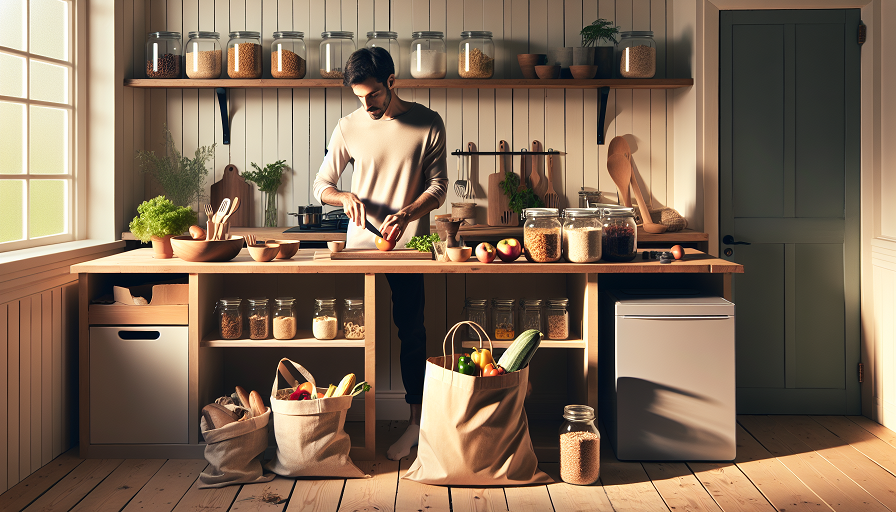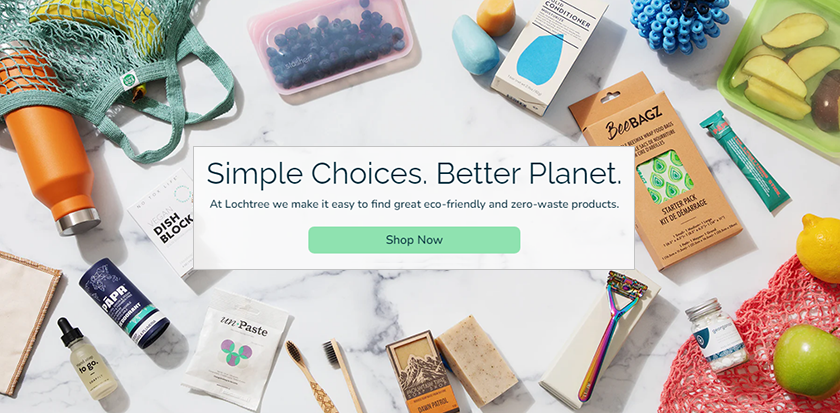
Your kitchen is the heart of your home, but it can also be a source of significant waste. From food scraps to single-use packaging, the kitchen is where sustainability often takes a hit. The good news? A few simple changes can reduce waste while saving you time and money. Here are practical zero-waste kitchen hacks that will help you create a more eco-friendly and efficient space.
Contents
Plan Meals with Purpose
Meal planning isn’t just for busy schedules—it’s also one of the easiest ways to cut down on food waste. By planning your meals in advance, you can buy only what you need and use up what you already have.
Start with an Inventory
Before heading to the store, take stock of what’s in your pantry, fridge, and freezer. This prevents you from buying duplicates and ensures older items get used before they expire.
Plan for Leftovers
When planning meals, think about how leftovers can be repurposed. For example, roast chicken can become chicken salad, and cooked veggies can be turned into a stir-fry. This saves you time and reduces food waste.
Use Every Part of Your Ingredients
Many kitchen scraps can have a second life if you know how to use them. From veggie scraps to citrus peels, there’s often more to your ingredients than meets the eye.
Save Veggie Scraps for Stock
Collect vegetable peels, stems, and ends in a freezer-safe container. Once you have enough, boil them with water to make a flavorful broth. This not only reduces waste but also eliminates the need to buy pre-packaged stock.
Use Citrus Peels Creatively
Don’t toss those orange or lemon peels! Use them to infuse vinegar for an all-natural cleaner, or dry them and grind into zest for baking and cooking. They add flavor and a touch of zest (pun intended) to your kitchen routine.
Store Food the Zero-Waste Way
Proper storage can extend the life of your food, keeping it fresher for longer and reducing waste. Skip the plastic wrap and embrace more sustainable storage solutions.
Swap Plastic for Beeswax Wraps
Beeswax wraps are a reusable alternative to plastic wrap. They’re perfect for covering bowls, wrapping cheese, or keeping cut fruits and veggies fresh. Wash and reuse them for months before composting them.
Glass Jars for Everything
Save glass jars from sauces, pickles, or jams and repurpose them as storage containers. They’re great for storing dry goods, leftovers, or even homemade dressings. Bonus: They’re plastic-free and see-through, so you can easily spot what’s inside.
Shop Smart to Reduce Waste
How you shop plays a big role in how much waste your kitchen generates. With a few mindful changes, you can minimize packaging and cut down on food waste.
Buy in Bulk
Purchase dry goods like rice, pasta, and beans in bulk to reduce packaging waste. Bring your own reusable bags or jars to the store for a waste-free shopping experience.
Avoid Overbuying Fresh Produce
It’s tempting to stock up on fresh fruits and veggies, but buying too much can lead to spoilage. Shop for what you’ll use in the next few days, and visit the store or farmers’ market more frequently if needed.
Compost Kitchen Scraps
Even with careful planning, some food waste is inevitable. Composting turns scraps into nutrient-rich soil, closing the loop on kitchen waste.
Set Up a Countertop Compost Bin
Keep a small compost bin or bucket on your counter for collecting food scraps. Look for a model with a lid to contain odors and keep things tidy. Once it’s full, transfer the scraps to your outdoor compost pile or a community compost program.
What to Compost
Compost-friendly scraps include fruit and veggie peels, coffee grounds, eggshells, and even paper towels. Avoid adding meat, dairy, or oily foods, as they can attract pests or slow down the composting process.
Make the Most of Leftovers
Leftovers often end up forgotten in the back of the fridge, but with a little creativity, they can become the star of your next meal.
Transform Leftovers into New Meals
- Rice: Turn leftover rice into fried rice or add it to soups for extra bulk.
- Veggies: Roast them for a quick side dish or blend them into a creamy soup.
- Stale Bread: Use it for breadcrumbs, croutons, or French toast.
Freeze for Future Use
If you’re not ready to eat your leftovers, freeze them for later. Label containers with the date and contents to keep your freezer organized and reduce the chances of food going to waste.
Embrace Zero-Waste Cleaning
Kitchen waste doesn’t stop with food—it includes the supplies you use for cleaning, too. Adopting zero-waste cleaning habits keeps your kitchen eco-friendly from top to bottom.
DIY Cleaning Solutions
Make your own all-purpose cleaner with equal parts water and vinegar, plus a few drops of essential oil for scent. Store it in a reusable spray bottle and use it to clean countertops, sinks, and more.
Replace Disposable Sponges
Swap disposable sponges for compostable options like loofahs or washable cloths. They’re just as effective and can be composted when they wear out, leaving no waste behind.
Small Changes, Big Impact
Adopting zero-waste kitchen hacks doesn’t require a complete overhaul of your routine. Start with a few changes—like meal planning or composting—and build from there. Every small step brings you closer to a sustainable, resourceful kitchen that saves time, money, and the planet.

